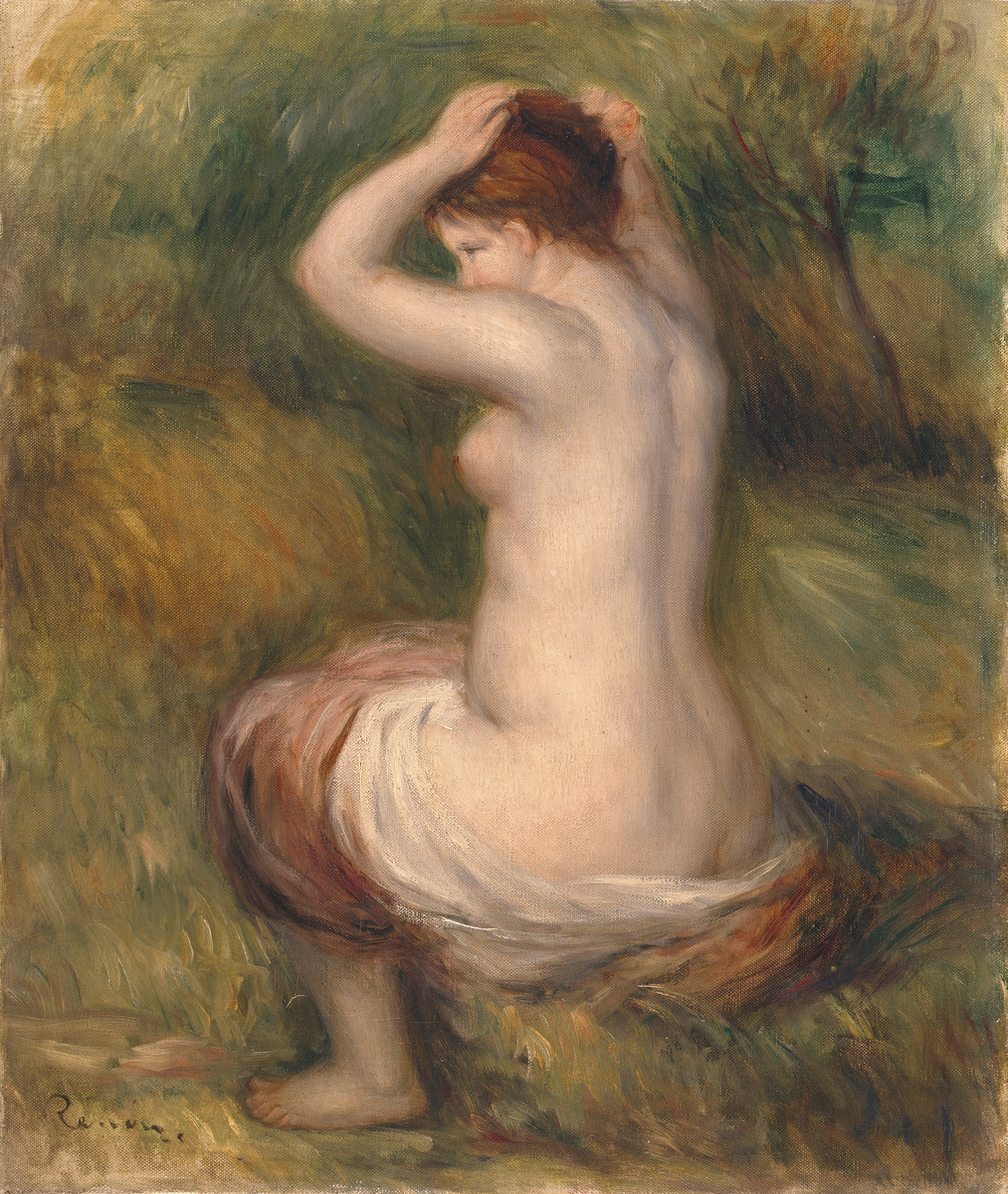Seated Nude
Pierre Auguste Renoir 1841 - 1919
Summary
This is a typical example of Renoir's late work, with its warm tones, idealised background, quasi-classical drapery and debt to Rubens' rendering of flesh - a combination that proved popular with Renoir's now well-established bourgeois market. His subject matter and technique were integrated to satisfy this market, with his palette growing much warmer around 1905. This young nude is almost fused with her surroundings, indicating that she belongs to late in his career, when his Parisian scenes gave way to idealised backgrounds, and contemporary dress was replaced by classical drapes. Renoir trained first in a porcelain factory, after which he joined the studio of Charles Gleyre (1806-1874), who also taught Monet and Sisley. He studied at the Ecole des Beaux-Arts (1862-1864) and exhibited irregularly at the Salon from 1863-1890, and with the Impressionists during the 1870s and 1880s.
Display Label
Channel Crossings English and French Impressionism and Post-Impressionism from the collection of Manchester Art Gallery This display looks at the allure and excitement of French art for a generation of English and Scottish painters emerging from the claustrophobia of late Victorian painting. Breaking with the Classical rigours of the Academy and the Salon, the artists who came to be known as the Impressionists painted naturalistic scenes with loose and quickly applied brushwork to convey the effects of light and the natural colours of shadows which had previously been rendered with blacks and browns. They explored the French countryside where they learned how to paint directly en plein air closely studying the changing effects of the seasons. Making regular visits to or studying in Paris, English and Scottish artists were in turn enthralled by these painterly discoveries. The new method of painting they then applied to the English landscape, to still lifes, portraits and interiors. Painters of the New English Art Club like George Clausen, John Singer Sargent and Philip Wilson Steer combined the subject matter of late Victorian genre scenes with the new style. Works by these artists and others are here shown alongside a few choice examples of French Impressionism from the collection and by the fore-runners of Impressionism; Eugène-Louis Boudin, Charles Daubigny and Johan Jongkind. While the English artists went to France the French painters and their dealers, such as Paul Durand-Ruel, escaped the Franco-Prussian war of 1870-71 and went to London. Their paintings were seen in England and some were even bought by Manchester collectors. In the Edwardian era newer developments in French art inspired English and Scottish artists on their cross-Channel trips and via a series of influential London exhibitions. The high-keyed colour and bold lines of the Post-Impressionist paintings of Paul Gauguin and Vincent Van Gogh were now huge influences on the artists of the Camden Town Group such as Harold Gilman and Charles Ginner. Later still Matthew Smith was to take his inspiration directly from Henri Matisse under whom he studied in Paris.
Object Name
Seated Nude
Creators Name
Date Created
1897 (circa)
Dimensions
object: 40.1cm x 33.8cm
frame: 59.2cm x 52.2cm
accession number
1972.90
Place of creation
France
Support
canvas
Medium
oil paint
Legal
© Manchester Art Gallery

